Abstract
In many developing countries the haemoglobinopathies (thalassaemias and sickle-cell disorder) are so common that they provide a convenient model for working out a genetic approach to control of chronic childhood diseases. At present, about 250 million people (4.5% of the world population) carry a potentially pathological haemoglobinopathy gene. Each year about 300,000 infants are born with major haemoglobinopathies. Haemoglobinopathy control programmes, based on WHO approaches and recommendations, have been established in different countries in all WHO Regions and have been successful in management of the problem. Following WHO recommendations the health burden of hereditary anaemias could be significantly reduced. This article summarizes the presentations and discussion made at a joint WHO/TIF (Thalassaemia International Federation) meeting, held in Cyprus in April 1993, and reviews the experience of programmes in several countries for the control of haemoglobinopathies in the world.
Full text
PDF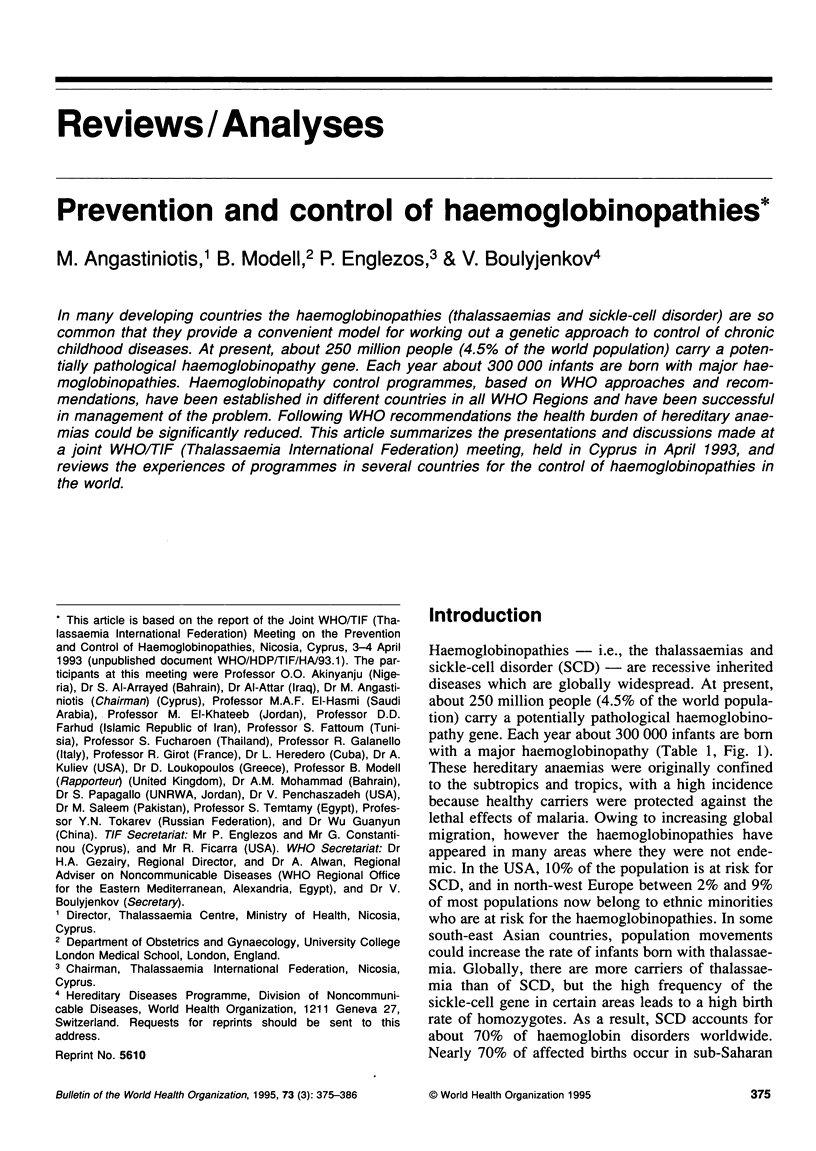
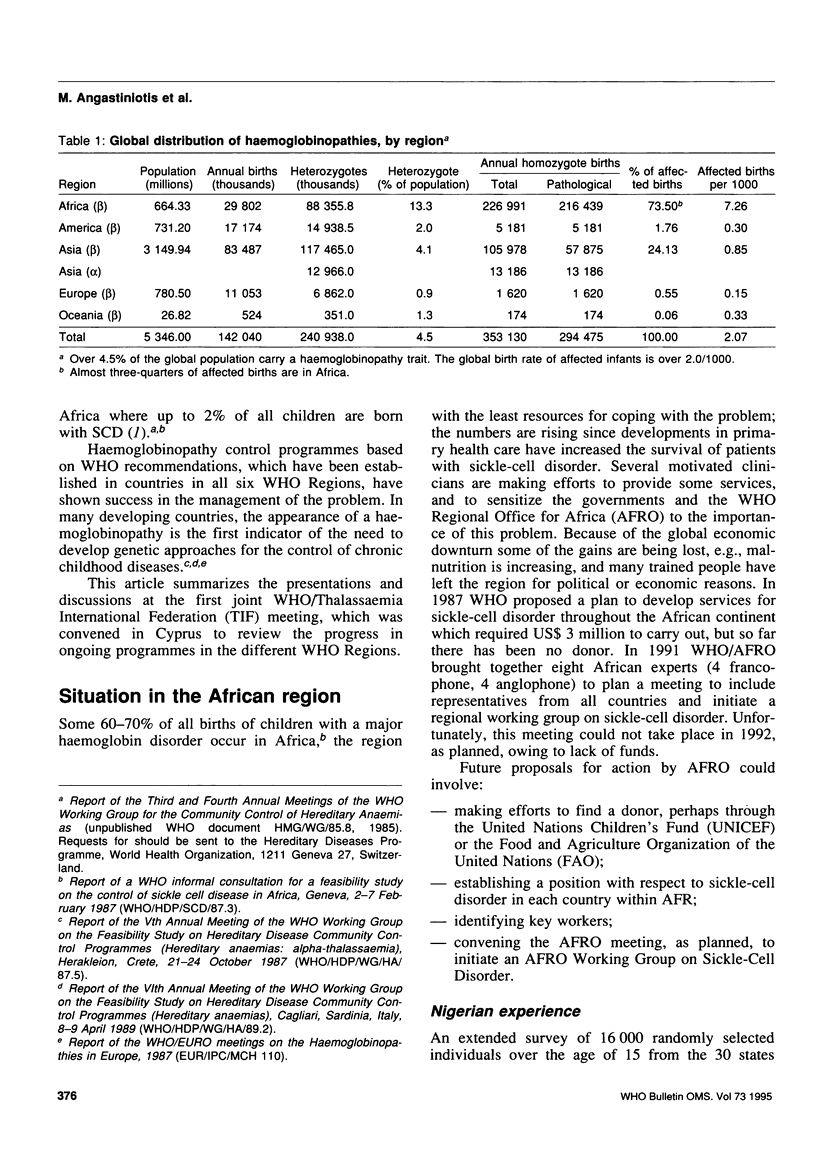
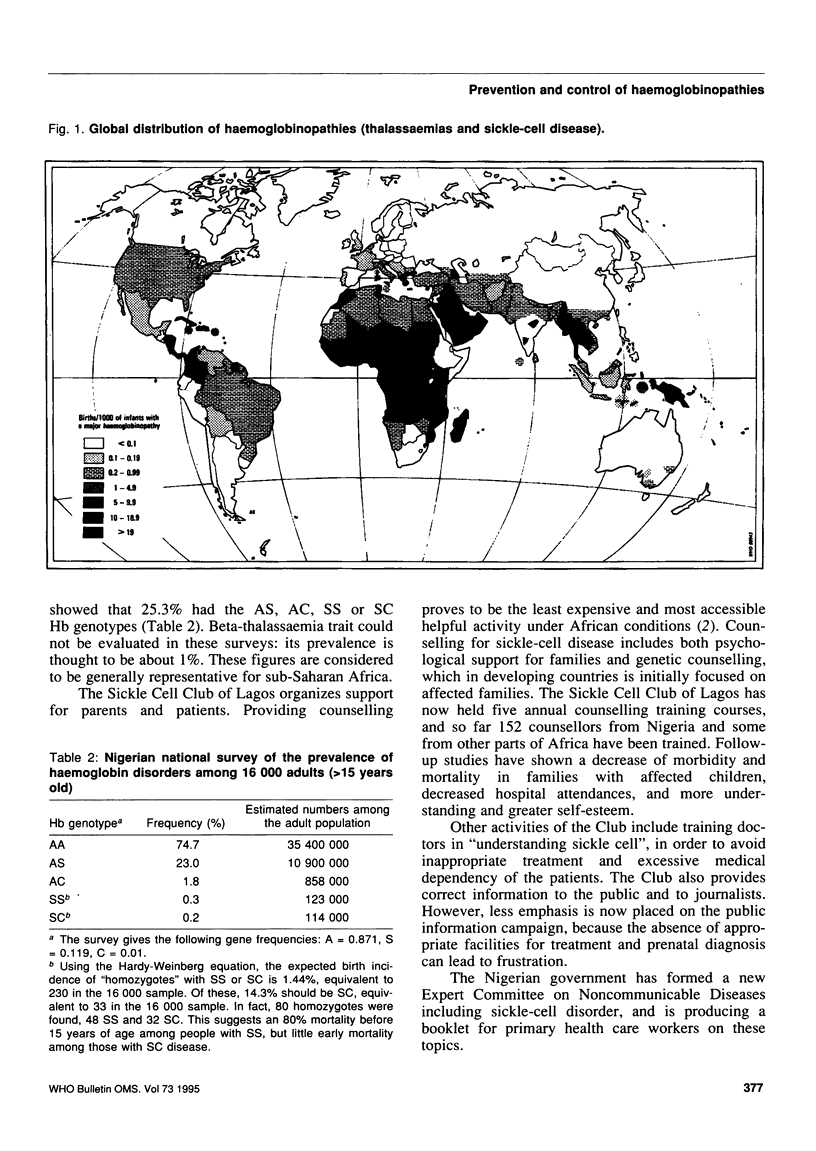
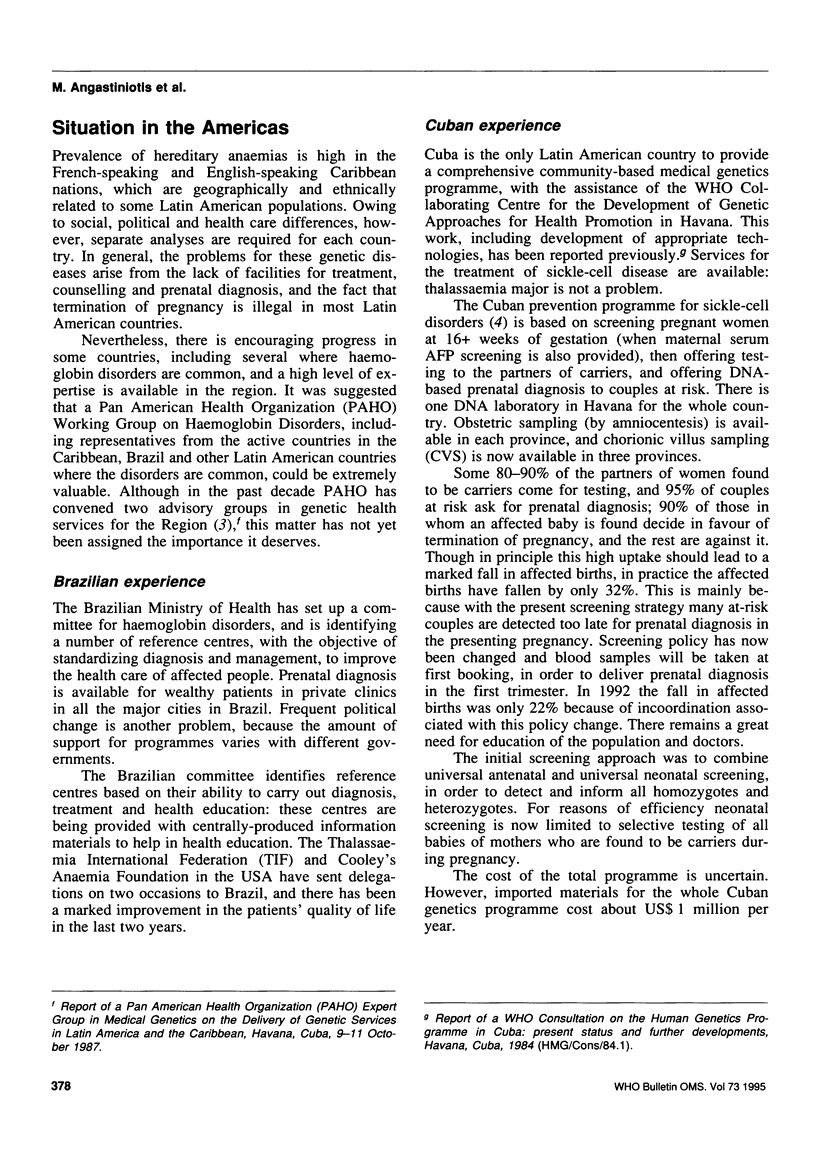
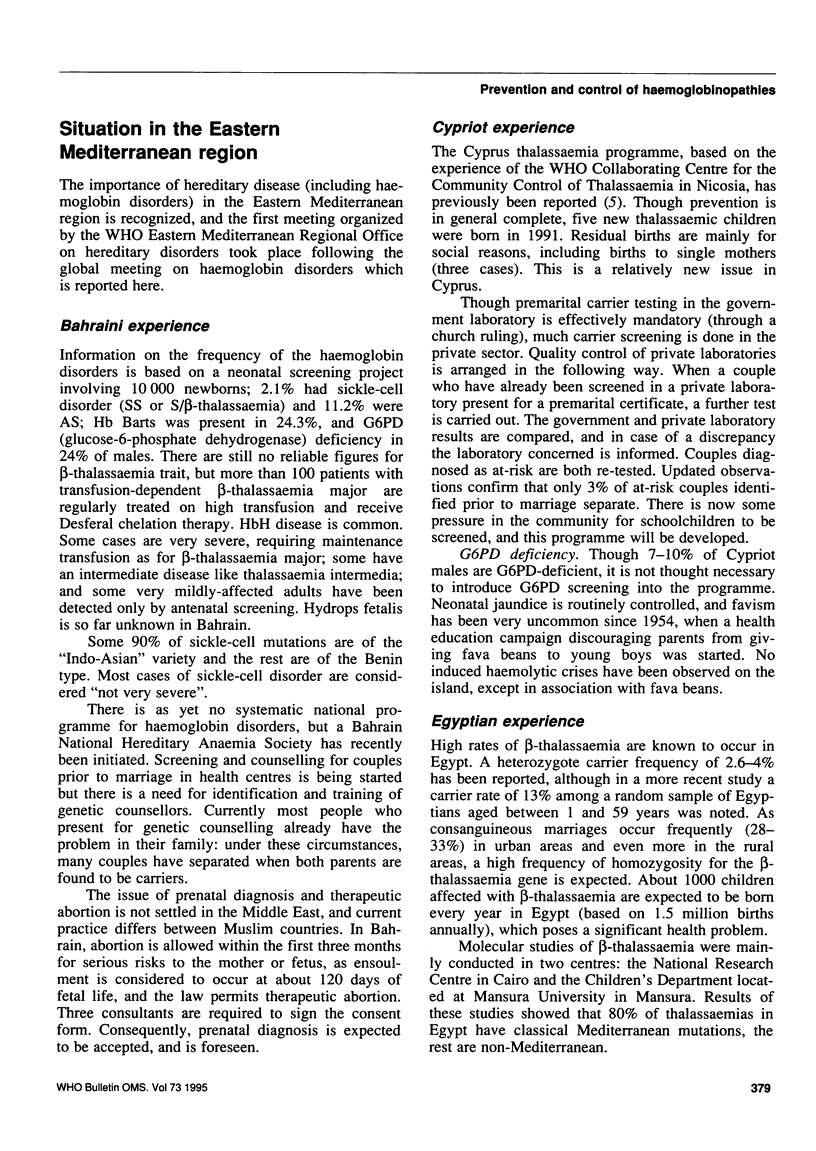
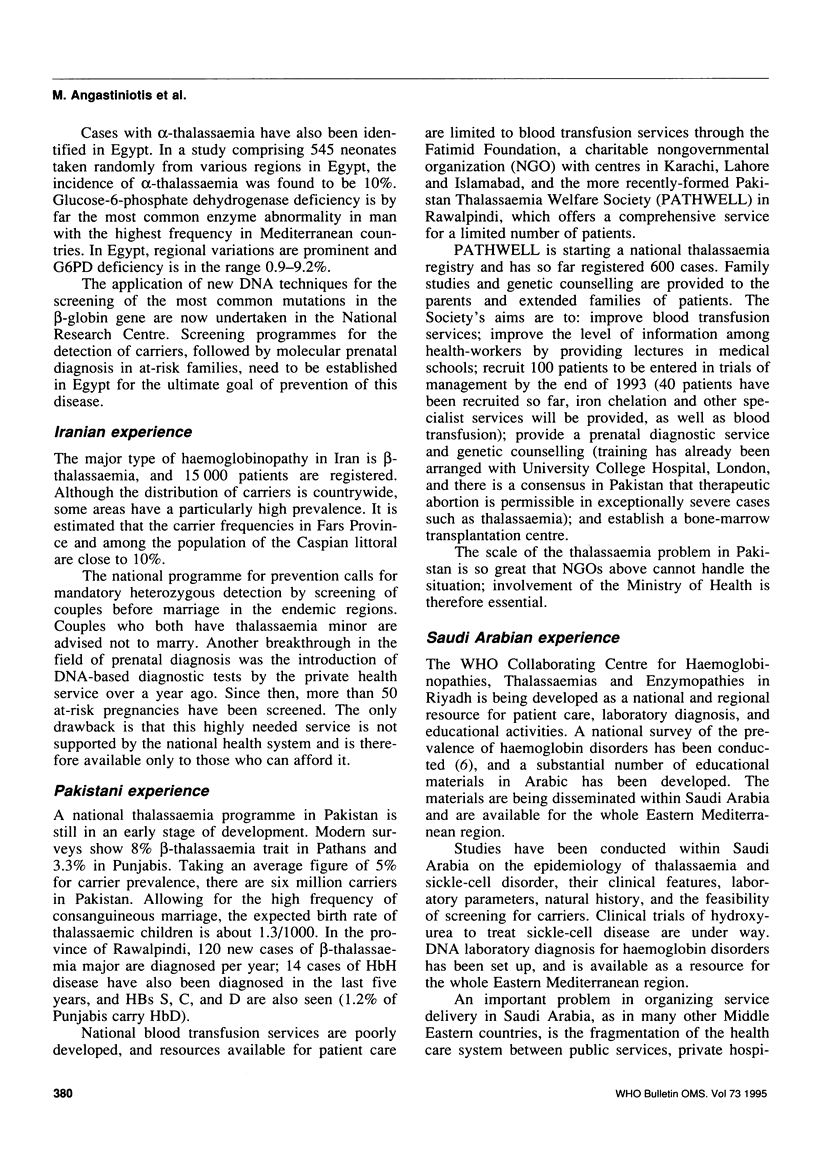
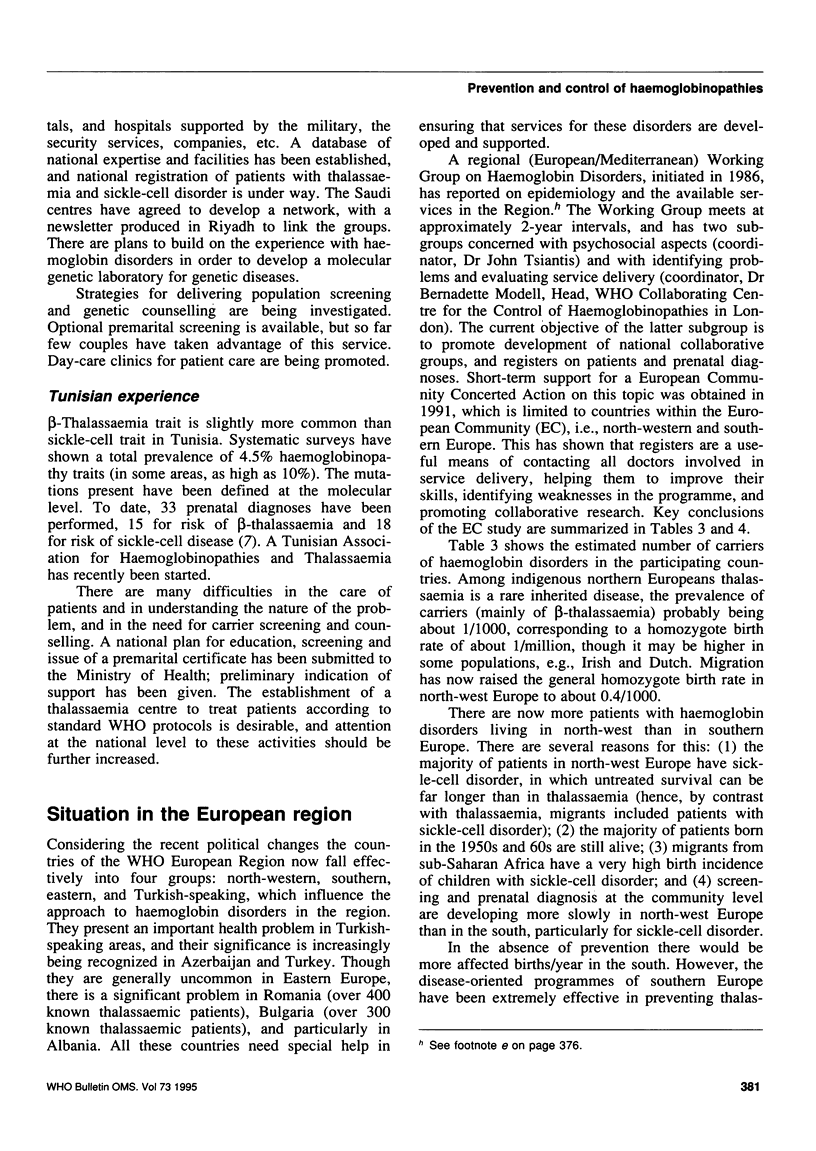
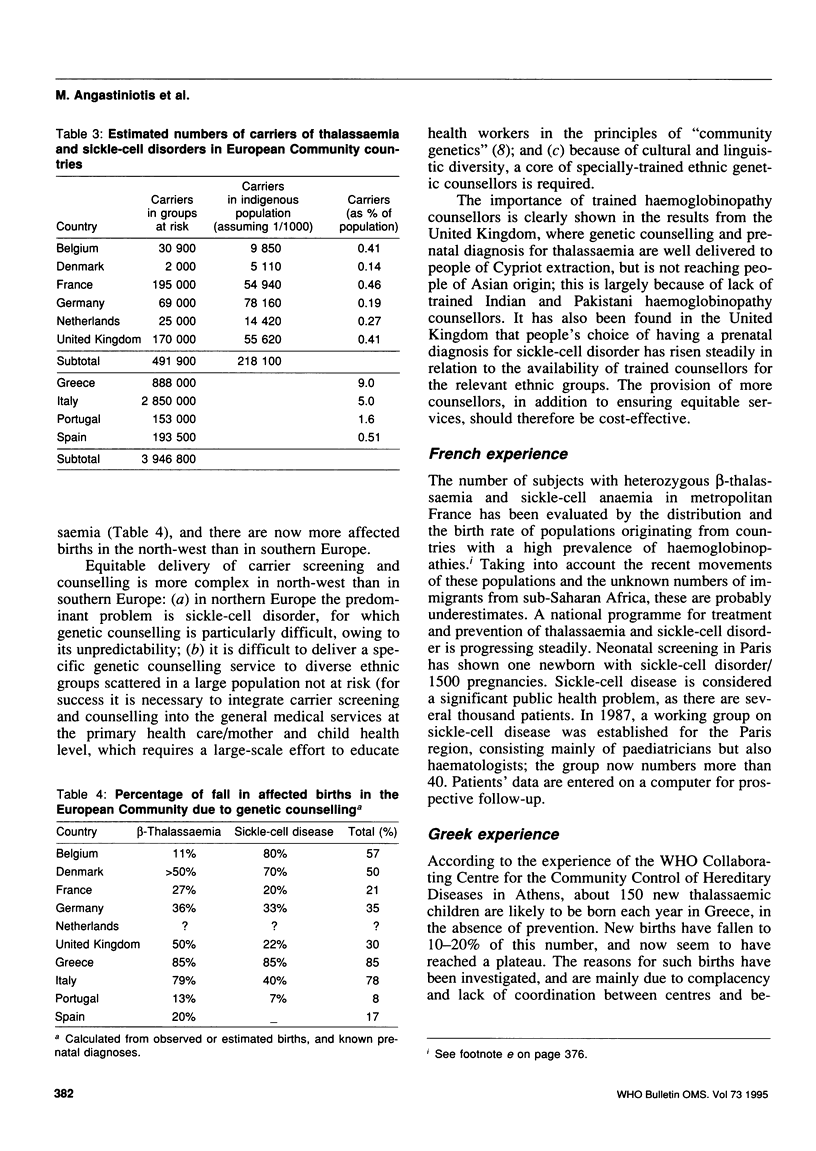
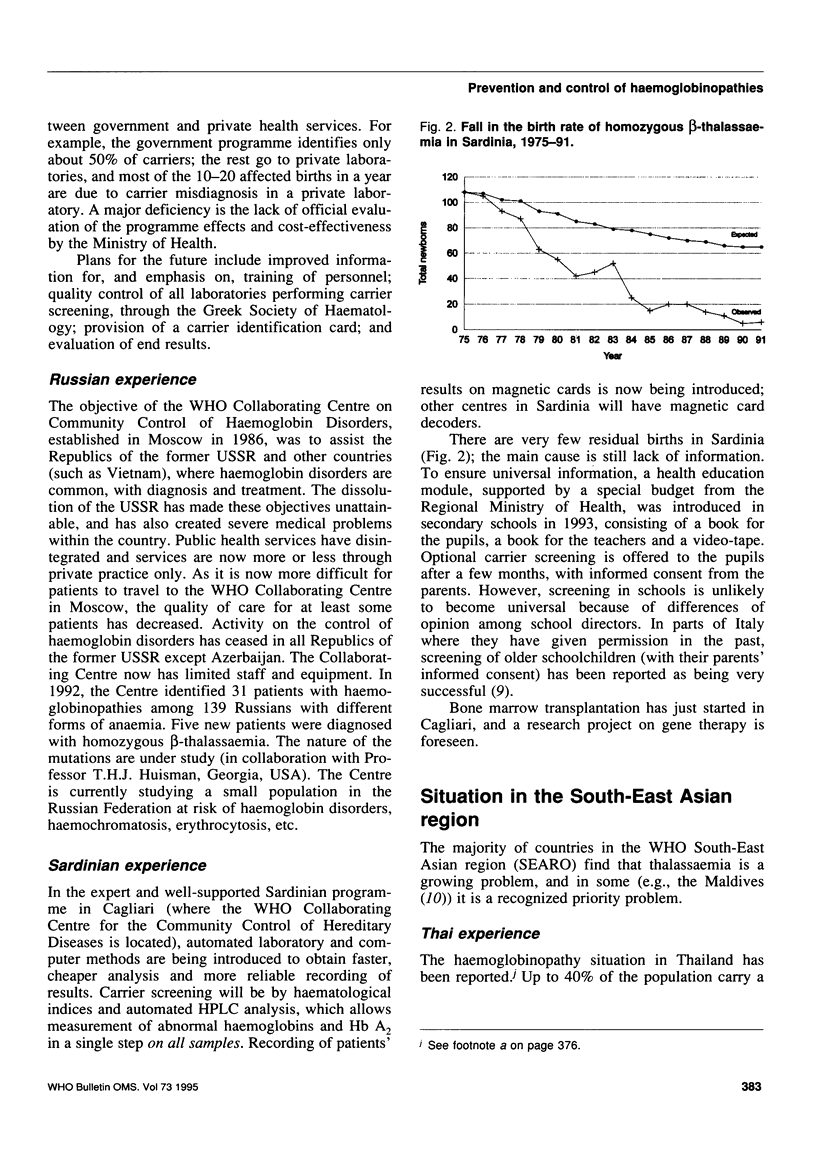
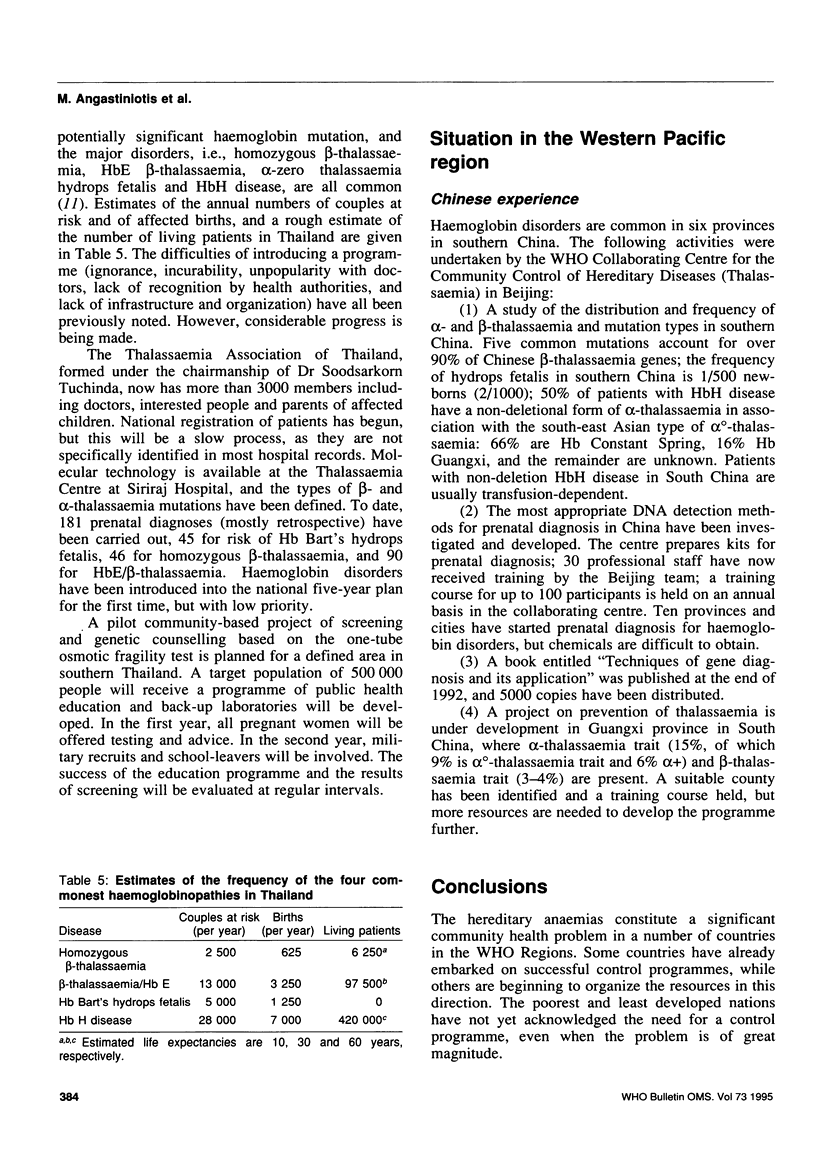
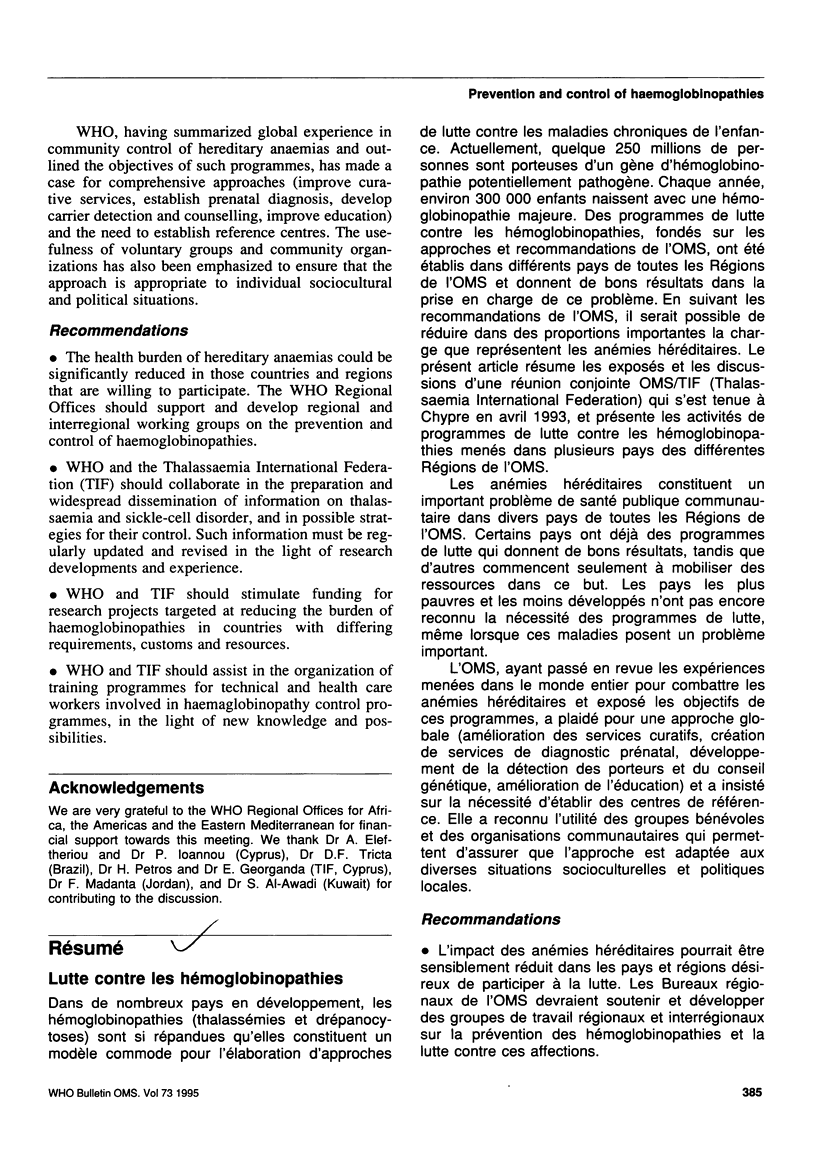
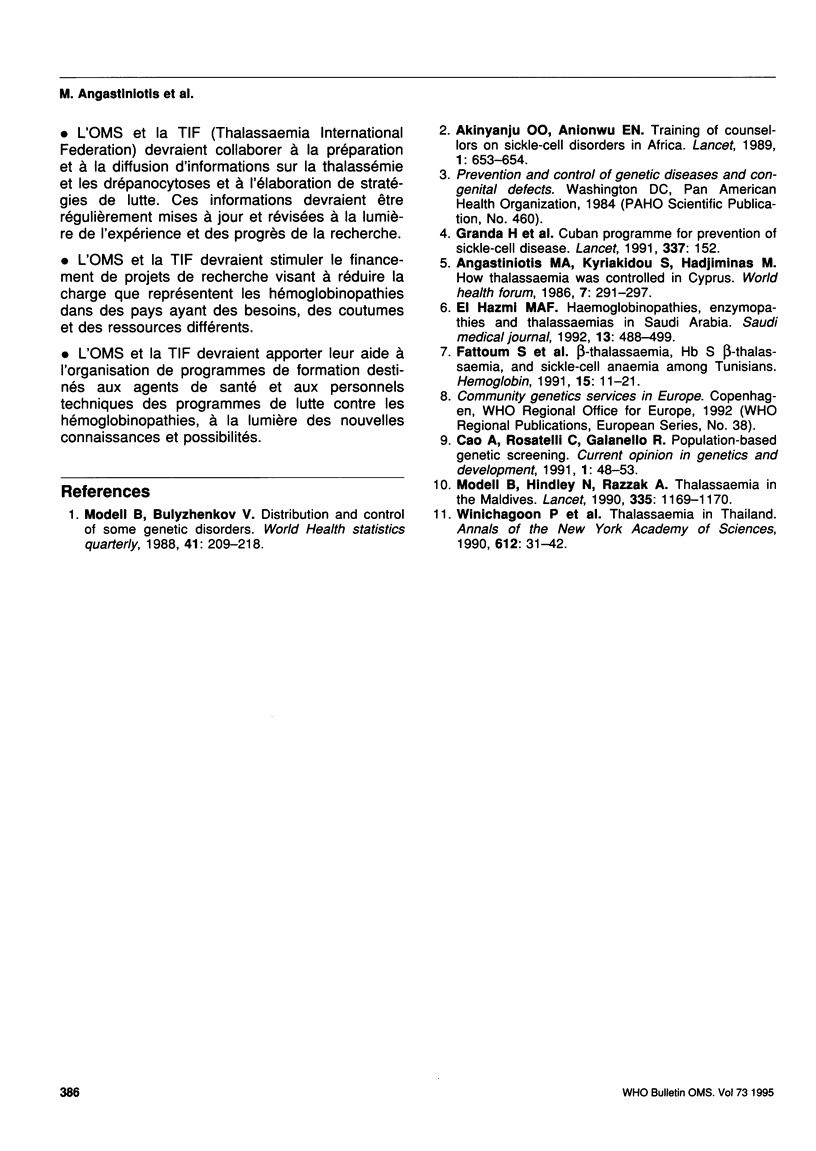
Selected References
These references are in PubMed. This may not be the complete list of references from this article.
- Akinyanju O. O., Anionwu E. N. Training of counsellors on sickle-cell disorders in Africa. Lancet. 1989 Mar 25;1(8639):653–654. doi: 10.1016/s0140-6736(89)92152-1. [DOI] [PubMed] [Google Scholar]
- Cao A., Rosatelli M. C., Galanello R. Population-based genetic screening. Curr Opin Genet Dev. 1991 Jun;1(1):48–53. doi: 10.1016/0959-437x(91)80040-s. [DOI] [PubMed] [Google Scholar]
- Fattoum S., Guemira F., Oner C., Oner R., Li H. W., Kutlar F., Huisman T. H. Beta-thalassemia, HB S-beta-thalassemia and sickle cell anemia among Tunisians. Hemoglobin. 1991;15(1-2):11–21. doi: 10.3109/03630269109072481. [DOI] [PubMed] [Google Scholar]
- Granda H., Gispert S., Dorticós A., Martín M., Cuadras Y., Calvo M., Martínez G., Zayas M. A., Oliva J. A., Heredero L. Cuban programme for prevention of sickle cell disease. Lancet. 1991 Jan 19;337(8734):152–153. doi: 10.1016/0140-6736(91)90810-c. [DOI] [PubMed] [Google Scholar]
- Modell B., Bulyzhenkov V. Distribution and control of some genetic disorders. World Health Stat Q. 1988;41(3-4):209–218. [PubMed] [Google Scholar]
- Modell B., Razzak A., Hindley N. Thalassaemia in the Maldives. Lancet. 1990 May 12;335(8698):1169–1170. doi: 10.1016/0140-6736(90)91181-9. [DOI] [PubMed] [Google Scholar]
- Organization of Medical Department: Medical Advisory Board NATIONAL SERVICE MINISTRY. Br Med J. 1917 Oct 13;2(2963):487–488. [PMC free article] [PubMed] [Google Scholar]
- Winichagoon P., Fucharoen S., Thonglairoam V., Tanapotiwirut V., Wasi P. Beta-thalassemia in Thailand. Ann N Y Acad Sci. 1990;612:31–42. doi: 10.1111/j.1749-6632.1990.tb24288.x. [DOI] [PubMed] [Google Scholar]


